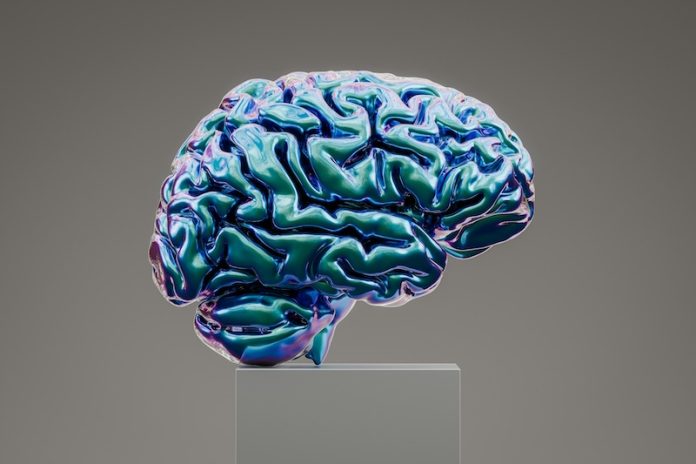
For over 30 years, researchers have focused on removing amyloid beta plaques—sticky clumps of protein in the brain thought to trigger Alzheimer’s disease. These plaques are believed to start a chain reaction that leads to memory loss and cognitive decline.
But a new study from Northwestern Medicine offers a different strategy: instead of focusing only on clearing plaques with expensive drugs, why not help the brain’s own immune system do the job better?
The study, published March 6 in Nature Medicine, shows that the brain’s immune cells, called microglia, play a more powerful role in Alzheimer’s treatment than previously thought. When activated the right way, these cells don’t just clear away harmful plaques — they also help restore a healthier brain environment.
“This could reshape how we treat Alzheimer’s,” said senior author Dr. David Gate, a neurology professor at Northwestern University Feinberg School of Medicine. “Instead of only depending on drugs, we may be able to target the immune system to improve how well treatments work.”
One big reason this research matters is because current drugs that target amyloid — like antibody treatments approved by the FDA — are expensive, can have side effects, and only offer limited improvements.
And earlier efforts to create Alzheimer’s vaccines failed when patients experienced dangerous brain swelling. So, while some progress has been made, many experts agree these treatments don’t cure the disease.
What makes this new research different is that it looks at real human brain tissue from people who had Alzheimer’s and were treated with amyloid-targeting drugs.
Using a new method called spatial transcriptomics, the scientists were able to see exactly where in the brain certain genes were active and how different microglia responded to treatment. This kind of close-up view hadn’t been possible before.
They examined brain tissue from 25 people: 6 had no signs of Alzheimer’s, 6 had Alzheimer’s but hadn’t been treated, and 13 had Alzheimer’s and had been vaccinated against amyloid beta. Of the treated group, 7 showed a strong response to the treatment — with lots of plaque cleared — while 6 showed only limited effects.
By comparing these groups, researchers learned that some microglia were more effective than others at removing plaques. The most responsive microglia had certain genes switched on, including TREM2 and APOE — both of which are already known to influence Alzheimer’s risk.
But what’s new is that in people who responded well to treatment, their microglia were not only better at clearing plaques, but they also returned to a “healing” state after doing so. This shows that the immune system doesn’t stay stuck in overdrive after treatment — it can adapt.
“This is a big deal,” said Gate. “One worry in the field has been whether immune cells that are activated to fight amyloid would stay in that aggressive state and do more harm than good. But we found that microglia can go back to their normal role and may even help repair the brain.”
The study also gives more support to the amyloid cascade hypothesis, which compares the disease’s progression to falling dominoes. If you can remove amyloid plaques before they trigger the next stage—especially the spread of tau, another protein that’s more directly tied to memory loss—you might stop Alzheimer’s before it begins.
That’s why early treatment matters, Gate says. “If you wait too long, tau has already spread and the damage is done. But if you treat early, you might prevent the whole domino effect.”
So, what’s next? The study shows that the key to successful treatment may lie in understanding the genetic makeup of these immune cells. Eventually, doctors might be able to directly target or enhance specific types of microglia instead of giving people general drugs.
Right now, there’s no way to precisely target these immune cells, but new techniques are being developed each year. As this kind of research grows, scientists hope to design therapies that activate the brain’s best defenders, giving them the tools they need to fight Alzheimer’s from within.
Lead author Lynn van Olst said the research offers real hope. “We’ve found clear genetic signals that explain why some people respond well to treatment and others don’t. This could lead to better, more personalized approaches in the future.”
In summary, this study moves the field forward by showing that the brain’s own immune system may hold the key to more effective Alzheimer’s treatments. Instead of just trying to remove toxic plaques with drugs, future therapies may focus on empowering microglia to do the job naturally — and even help the brain heal in the process.
If you care about Alzheimer’s, please read studies about Vitamin D deficiency linked to Alzheimer’s, vascular dementia, and Oral cannabis extract may help reduce Alzheimer’s symptoms.
For more information about brain health, please see recent studies about Vitamin B9 deficiency linked to higher dementia risk, and results showing flavonoid-rich foods could improve survival in Parkinson’s disease.
The research findings can be found in Nature Medicine.
Copyright © 2025 Knowridge Science Report. All rights reserved.



